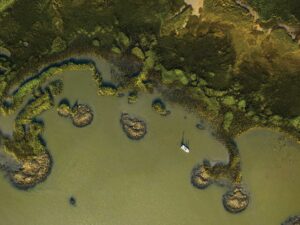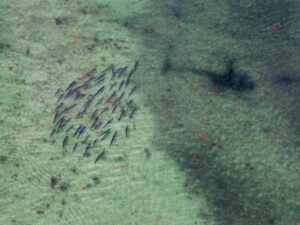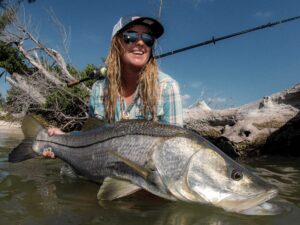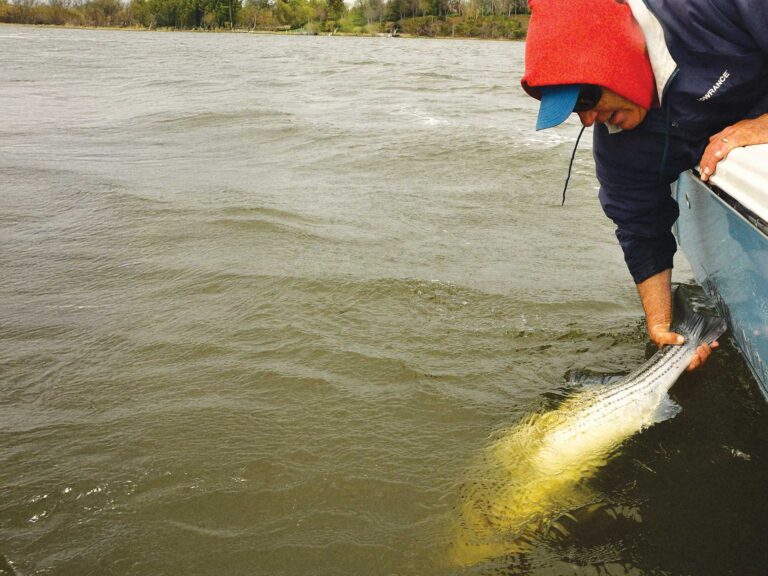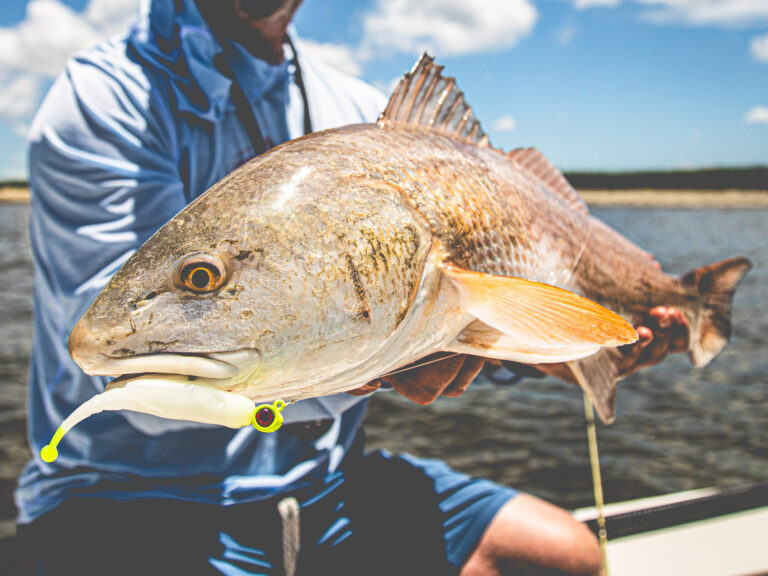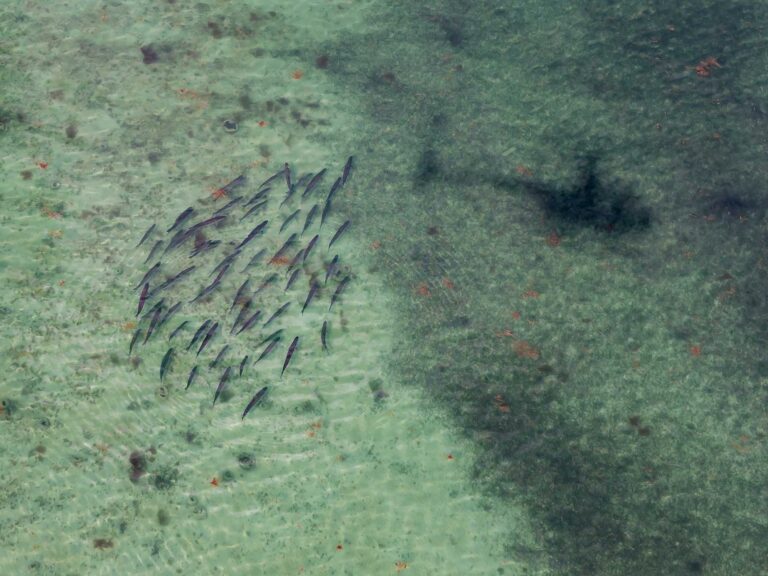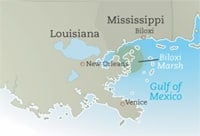
The Louisiana marshes offer hundreds of miles of arguably the most productive redfish territory in the world. You can catch tailers almost any day of the year, and the meandering waterways provide so much fishable area that encounters with other anglers are rare.
One spot, however, holds reds of gargantuan proportions, and its remote nature keeps most fishermen from going there. In November and December, schools of giant reds – including some well over 50 pounds – invade the Biloxi Marsh along Louisiana’s northeastern shoreline. The marsh produces so many large reds that anglers routinely catch 30-pound-class fish, and they can also encounter black drum up to 70 pounds, which feed just as aggressively.
Perhaps most intriguing about the Biloxi Marsh is that the water in this particular area runs shallow, and the fish show up for one purpose – to gorge on crabs. This combination results in a sight-caster’s dream. Many of the big fish push into water that’s far too skinny for them, and you can see their backs from across the flats and hear their constant sloshing. Even better, they’ll feed so intently that it’s difficult to spook them. The problem with landing these fish becomes the area’s gauntlet of oyster shells and debris they run through once hooked.
While you can actually get to the Biloxi Marsh more quickly from Mississippi, few guides go there on a regular basis, especially in late fall. Capt. Gregg Arnold, perhaps the best-known guide who fishes the marsh, works out of Louisiana and makes the long run almost daily during this time of year. The trip has earned his clients several of the top spots in Louisiana and world-record books, including Conway Bowman’s world-record 41-pounder.
Gearing up for this trip means rigging slightly heavier than you might for most redfish. A stout 9-weight should afford plenty of backbone, considering there’s almost no deep water within the heart of the marsh. Casts range from 20 to 70 feet, but be sure to pack on as much backing as possible. Because of the water’s depth and the time of year, a cool-water floating line works best. Leaders should be heavy, but shock tippets are unnecessary. As for flies, your guide will have his favorites, but a variety of traditional patterns like Clousers and spoons will also work here.

